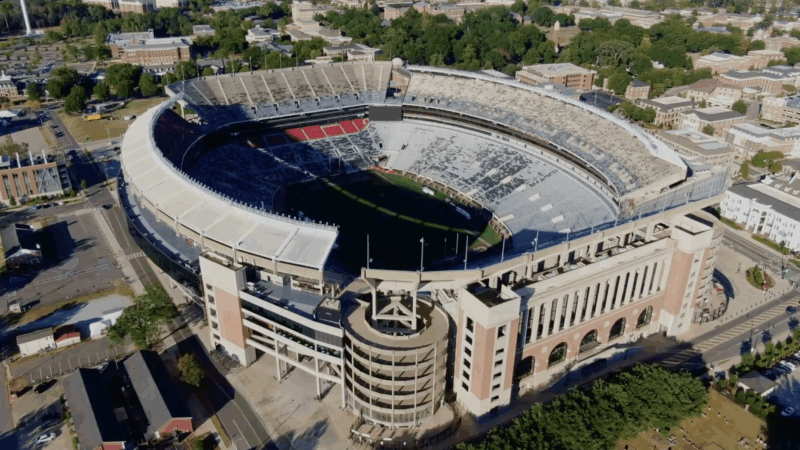Why Birmingham-Southern is Slashing Tuition
Car shoppers aren’t the only ones who experience sticker shock. It happens with colleges, too. Birmingham-Southern College has announced that beginning next fall, it’ll slash its $35,000 a year tuition in half. It’s one of several schools around the country cutting tuition in hopes of attracting more students. But there’s more to it than the sticker price.
Jeremy Scott, 22, left Birmingham-Southern to work full time. He hadn’t planned on joining the workforce full time so soon. Two years ago, Scott was a sophomore at Birmingham-Southern College.
His freshman year, it cost him $28,000 a year to attend Birmingham-Southern. The next year, tuition went up a few thousand dollars, and he just couldn’t afford it anymore. But he might’ve stuck it out if he knew what was coming. Birmingham-Southern announced starting next fall, it will cut tuition in half. Last year at least eight colleges and universities offered similar discounts. Birmingham-Southern’s might be the biggest.
“The sticker price at Birmingham-Southern for tuition and fees had reached $35,000, and when you included room and board the total price was approaching $50,000,” says Linda Flaherty Goldsmith, president of Birmingham-Southern.
But the sticker price is often much different than what students pay after you factor in scholarships and other financial aid. More than 90 percent of students at Birmingham-Southern receive scholarships. But Goldsmith says many students didn’t know that. She wanted those students to at least consider the school. “When we did our research, we learned that 80 percent of students would not look at a college a second time if it had a sticker price anywhere near that rate,” she says.
But cutting tuition doesn’t necessarily mean Birmingham-Southern loses money. Goldsmith says they’ll make up for the lower sticker price by offering less in scholarship money. That’s a common strategy, says Rick Seltzer, a reporter with Inside Higher Ed who looked at tuition cuts recently. “In some places it’s probably possible to cut your sticker price and in the end never actually lose any money,” he says.
That’s because when you throw in a big price cut and take away scholarship money, students end up paying the same. There’s another benefit to Birmingham-Southern: the lower sticker price could drive more students to the school. Think of it like Walmart—they charge less but make up for it by selling higher volumes.
Birmingham-Southern’s enrollment is about 1,300; it wants to get to 1,600. And Goldsmith says the tuition cut is one part of its growth strategy. The school added four new majors. And it started partnerships with community colleges and other schools around the state making it easier for students to transfer in.
And Seltzer says it’s things like this—not tuition cuts alone– that make schools stand out to college applicants.
Auburn tabs USF’s Alex Golesh as its next coach, replacing Hugh Freeze on the Plains
The 41-year-old Golesh, who was born in Russia and moved to the United State at age 7, is signing a six-year contract that averages more than $7 million annually to replace Hugh Freeze. Freeze was fired in early November after failing to fix Auburn’s offensive issues in three seasons on the Plains.
Alabama Power seeks to delay rate hike for new gas plant amid outcry
The state’s largest utility has proposed delaying the rate increase from its purchase of a $622 million natural gas plant until 2028.
Former U.S. Sen. Doug Jones announces run for Alabama governor
Jones announced his campaign Monday afternoon, hours after filing campaign paperwork with the Secretary of State's Office. His gubernatorial bid could set up a rematch with U.S. Sen. Tommy Tuberville, the Republican who defeated Jones in 2020 and is now running for governor.
Scorching Saturdays: The rising heat threat inside football stadiums
Excessive heat and more frequent medical incidents in Southern college football stadiums could be a warning sign for universities across the country.
The Gulf States Newsroom is hiring an Audio Editor
The Gulf States Newsroom is hiring an Audio Editor to join our award-winning team covering important regional stories across Mississippi, Alabama and Louisiana.
Judge orders new Alabama Senate map after ruling found racial gerrymandering
U.S. District Judge Anna Manasco, appointed by President Donald Trump during his first term, issued the ruling Monday putting a new court-selected map in place for the 2026 and 2030 elections.








